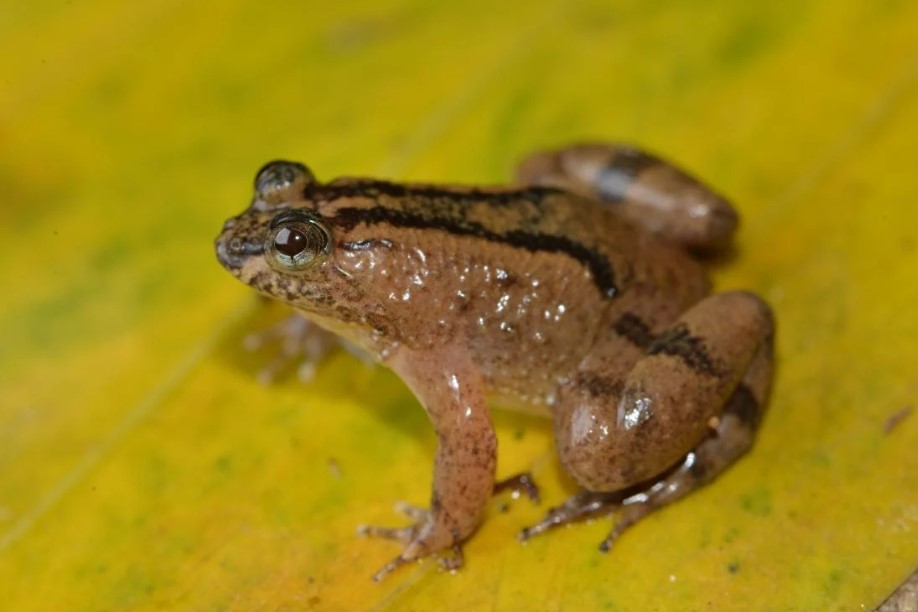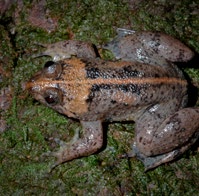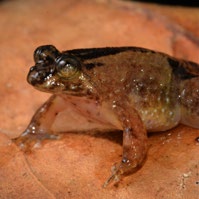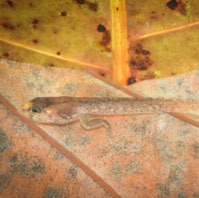THE EVOLUTIONARY HISTORY OF PUDDLE FROGS
by Professor Dr Indraneil Das
Institute of Biodiversity and Environmental Conservation
Institute of Biodiversity and Environmental Conservation

Earth's most biologically rich areas are facing unprecedented threats from human activities, impacting organisms and their habitats. Preserving their genetic diversity is therefore an important step toward conservation. Now, Universiti Malaysia Sarawak zoologist, Professor Dr Indraneil Das and a team of international colleagues have examined the evolutionary relationships of the poorly understood puddle frog populations, which belongs to the genus Occidozyga. Their analyses have resulted in a more robust understanding of the evolutionary relationships between various species of the lineage.

A species similar to the familiar Occidozyga laevis is among at least 11 other distinct lineages across regions that include Borneo and the Phillipines.
Frogs of the Occidozyga genus have a wide distribution, from China to the islands of Southeast Asia. Puddle frogs are found in shallow water bodies, like ponds, swamps and slow-moving streams. They are often genetically diverse while exhibiting very subtle differences in their features, such as the extent of webbing on their feet, their dermal patterns, size and colouration. This makes it difficult to classify them based on their features alone.
Prof Dr Indraneil Das and his team collected puddle frog samples from the Philippines and the Sundaland biodiversity region in Indonesia for over 20 years. They examined the features of the frogs, conducted mitochondrial RNA gene sequencing, and compared their molecular information and fossil records relevant for calibration to geological events in the region in order to compile a phylogenetic tree that can map the evolutionary relationship between species belonging to the Occidozyga genus.
The analyses revealed extensive genetic diversity among puddle frog species, with at least 29 evolutionary lineages. These lineages consist of a continuous line of puddle frog descendants from a common ancestor, which could be dated back to over 40 million years before present.
The analyses revealed extensive genetic diversity among puddle frog species, with at least 29 evolutionary lineages. These lineages consist of a continuous line of puddle frog descendants from a common ancestor, which could be dated back to over 40 million years before present.

Another undescribed member of the genus, related to Occidozyga rhacoda can be found in western hills of Sarawak in Malaysia.
While distinct lineages could be easily classified, the process of assigning species is a more complicated task that is part of ongoing work. The current result suggests that the diversity of these frogs has been largely underestimated.
The vastness of the Occidozyga genus makes them an excellent model organism for understanding other species with poorly-understood evolutionary relationships. "The recognition of lineages can have a profound effect on many aspects of biology, including the conservation and management of other endangered species," says Prof Dr Indraneil.

Occidozyga tadpole, which is unusual amongst frog larvae in being carnivorous. Their mouth parts are adapted for taking in large arthropods.


